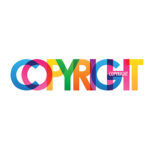Get Ready for Insurtech!
9 Oct 2017
Financial technology (fintech), the use of new technology by financial institutions, has shaken up the banking industry in areas such as foreign exchange, mobile payments and peer-to-peer (P2P) lending. Similarly, the use of technology in the insurance sector is accelerating and will have a potentially transformative effect on the development, marketing, sale, underwriting and administration of insurance products in the near future. The term “Insurtech” has been coined to describe the application and use of technology in insurance.
Why Insurtech?
In the insurance area, technological advancement is being used to create a more direct and efficient relationship between insurance companies and their retail customers. Potentially, this will lead to a better customer experience. Customers can benefit from lower premiums and greater product choice as insurers use big data to improve risk pricing and offer products (including online sales of insurance) customized to individual needs. Automation of policy administration and claims handling processes using blockchain technology can lead to smoother and quicker processing of insurance claims, a primary concern for policyholders. At the same time, insurers can benefit from the greater reach and lower cost of a digital sales platform. Digital record keeping and settlements can also increase efficiency and reduce costs and fraud risk.
InsurTech Developments
Current notable developments in InsurTech include the following:
1. Application of blockchain technology in record keeping and policy administration;
2. Marketing and sale of insurance on digital platforms; and
3. Application of telematics technology and big data to underwriting and loss prevention.
Blockchain Technology
Blockchain is the technology underpinning the cryptocurrency Bitcoin, and allows the creation of a distributed ledger that records transactions on a permanent global database on computer servers around the world. These servers work as nodes, with each node holding a complete copy of the data which is stored in tamper-proof blocks (joined in unbroken chains) on the common ledger. In this way, each member of the network has a complete, traceable record of all transactions and information stored in the ledger, which cannot be changed or added to without the consent of everyone on the network.
In insurance, an industry which heavily relies on documentation and databases, blockchain has the potential to increase efficiency and improve transparency by allowing parties to insurance and reinsurance transactions to share data and documentation with each other in real time.
Applications or programs can also be built on blockchain to allow automatic execution of contracts composed in computer code (so-called “smart contracts’) which are stored on the shared ledger. Such smart contracts have the potential to greatly increase the speed and efficiency of claims processing, as well as alleviating fraud risk since the blockchain ledger provides immutable records and tracking. As an example, life insurance smart contracts can be programmed in future to automatically transfer life insurance proceeds to the beneficiary’s bank account on the policyholder’s death, verified by an automatic real-time check of the online death register.
Online Marketing & Sales
Going beyond policy administration, new digital platforms are being launched for the marketing and sale of insurance products. Price comparison websites are already common, particularly in the automobile insurance area. Taking digital distribution a step further, pure online insurance sales platforms are emerging with insurers directly selling to consumers with no intermediary or human interface. In particular, online-only insurance companies are starting to take off in China, with the launch of Zhong An, an online-only property and casualty insurer, in 2013. Backed by Chinese tech giants Alibaba Group and Tencent Holdings, Zhong An is the first and only company in China to date with an internet insurance license. It has used its digital platform to sell tailored insurance for particular products/services to the mass market, such as shipping return insurance for online purchases on Taobao and flight delay insurance for online bookings on CTrip via links embedded on the platforms of its online market partners. From inception through to the end of 2016, Zhong An has sold over 7.2 billion policies and serviced some 492 million customers. It just raised US$1.5 billion in September 2017 by listing on the Hong Kong Stock Exchange in the city’s biggest fintech offering to date.
Telematics & Big Data
Technology is also being used to inform underwriting decisions, including both risk assessment and pricing. In particular, telematics, the “Internet of Things” (IoT) technology that collects, stores and transmits data about the location, usage, performance and operating status of devices, machines and products, is being used by insurers for ongoing risk profiling and monitoring of customers, allowing them to customize premiums and improve risk pricing. For example, many auto insurers in the U.S. and Europe now offer premium discounts to customers for installing telematics devices in their cars (which track factors such as speed, braking, acceleration etc.) and then driving in a certain manner. Similarly, some health insurers are giving customers free fitness tracking devices and then offering to lower their premiums if they meet certain exercise requirements. Home insurers are likewise offering premium discounts to customers who install cameras, sensors, smoke detectors, leak detectors and other IoT devices in their homes. In this way, customers are incentivized to reduce their health and accident risks and avoid claims under their insurance.
Risks and Challenges
In the area of telematics, the primary challenges relate to privacy and security. Even with the incentive of premium discounts, customers may be reluctant to share private information with IoT device manufacturers and insurance providers, particularly given security and hacking concerns. To encourage broader customer take-up of IoT devices, better security will have to be built both into the devices themselves and the software applications and network connections linking the devices. There is also concern about what companies will do with the information collected, much of which constitutes personal data subject to regulation. For example, collected data could potentially be used to decline insurance altogether to high-risk customers. Thus, regulators will no doubt closely monitor how insurers collect and use IoT data in underwriting having regard to the fair treatment of customers.
Online marketing and sales of insurance will likewise be subject to regulatory scrutiny. While more straightforward products such as car and property insurance may quite easily be sold online, life insurance is a different proposition. There are stringent regulatory requirements in most jurisdictions (including Hong Kong) regarding steps which must be taken by manufacturers and distributors of long-term insurance products in the marketing and sales of such products in order to ensure protection of the best interests of customers. Requirements regarding undertaking a thorough suitability assessment of the customer’s insurance needs and financial circumstances and clear communication of complex product features and risks may be hard to meet via an online platform.
Turning to the use of blockchain technology for policy administration, insurers can only take advantage of it after they digitalize and consolidate all of their contracts and data. The technology itself also presents regulatory challenges since the blockchain is not located in any one jurisdiction making it difficult to regulate. On the other hand, the transparent nature of blockchain makes the data available to those on the network and risk monitoring presumably more straightforward.
Where is Hong Kong?
Following in the footsteps of Singapore and the UK, the Hong Kong Insurance Authority (IA) launched an “Insurtech Sandbox” on September 29, 2017. This Sandbox will allow authorized insurers in Hong Kong to undertake pilot runs of new Insurtech products/applications without the need to get full regulatory approval provided that the initiatives in question meet certain criteria (which include having adequate safeguards to protect customers’ interests during the trial). A similar pilot scheme was launched by the Hong Kong Monetary Authority over a year ago under which banks in Hong Kong have been running trials of their new fintech products. It is expected that insurers will follow suit now that they potentially have a safe space try out new technologies without taking on the full cost and regulatory burden of IA supervisory requirements.
At the same time as launching the Sandbox, the IA introduced a pilot scheme “Fast Track” for applications for authorization from applicants who will carry on insurance business in or from Hong Kong using solely digital distribution channels – i.e. without the use of conventional channels involving agents, brokers or banks. The intention is to promote direct digital distribution of insurance which it is envisaged will bring benefits to customers in terms of new products and cost efficiency.
Implications
Insurtech has been slow to take off in Hong Kong, partly due to wariness from insurers and their traditional reliance on middlemen (agents and brokers) for distribution of insurance products. Hong Kong currently has approximately 100,000 individuals who are registered either as individual insurance agents, or responsible officers/technical representatives undertaking insurance agency or brokerage business in Hong Kong. However, increased online sales of insurance by both traditional and newly authorized online-only insurers will allow insurers to interact directly with customers, allowing them to save on agency/brokerage commissions and reduce operating and distribution costs. Reduction of the need for middlemen in the industry will likely lead to restructuring and redundancies.
On the other hand, and as warned by the IA in relation to the Fast Track scheme, not all insurance products are suitable to be sold online, and the IA’s expectation is that all of its existing “policyholder protection measures should remain intact”. Stringent regulatory requirements in relation to the marketing and sale of long-term insurance may be a significant barrier to online distribution of life insurance.
Nonetheless, the advent of the Insurtech Sandbox and Fast Track application process for online insurers will likely draw more technology firms into the insurance sector, following the lead of Alibaba Group and Tencent Holdings which collaborated to set up Zhong An. Traditional insurers will face competition from the new Insurtech startups and have already begun developing and investing in technology so as not to be left behind. In this changing Insurtech landscape, the challenge for regulators such as the IA will be to develop a regulatory culture which protects customers but at the same time is flexible enough to support new Insurtech products and services.
最新文章

 香港中环雪厂街二号圣佐治大厦五楼503室
香港中环雪厂街二号圣佐治大厦五楼503室 +852 2868 0696
+852 2868 0696














